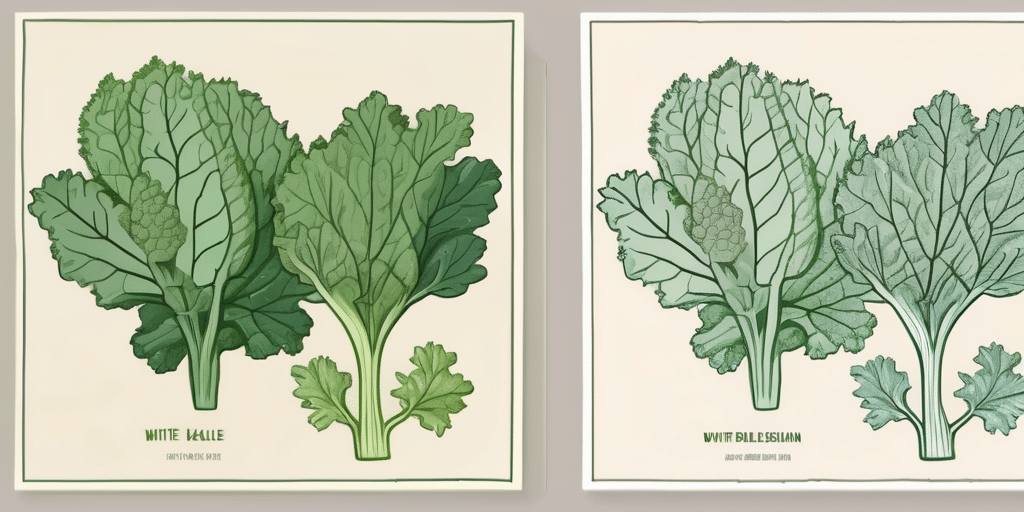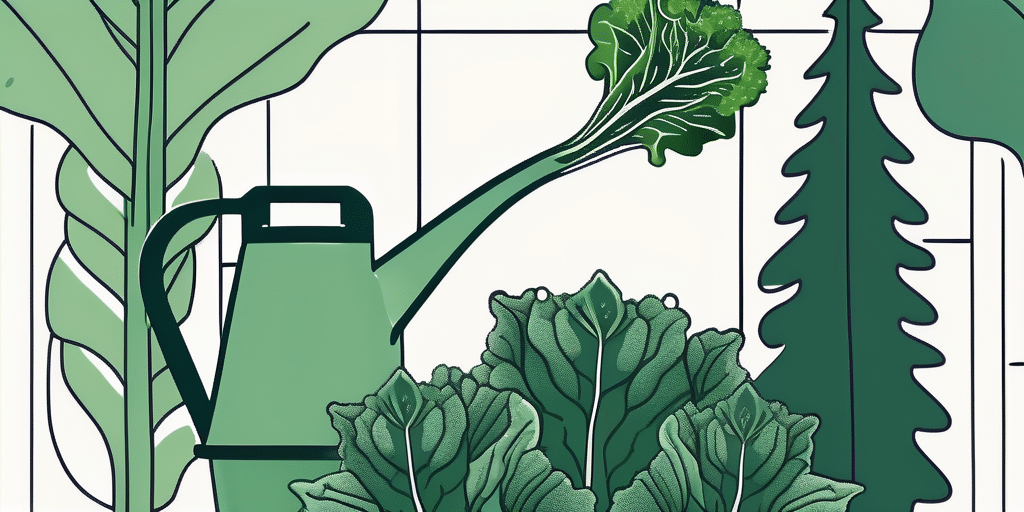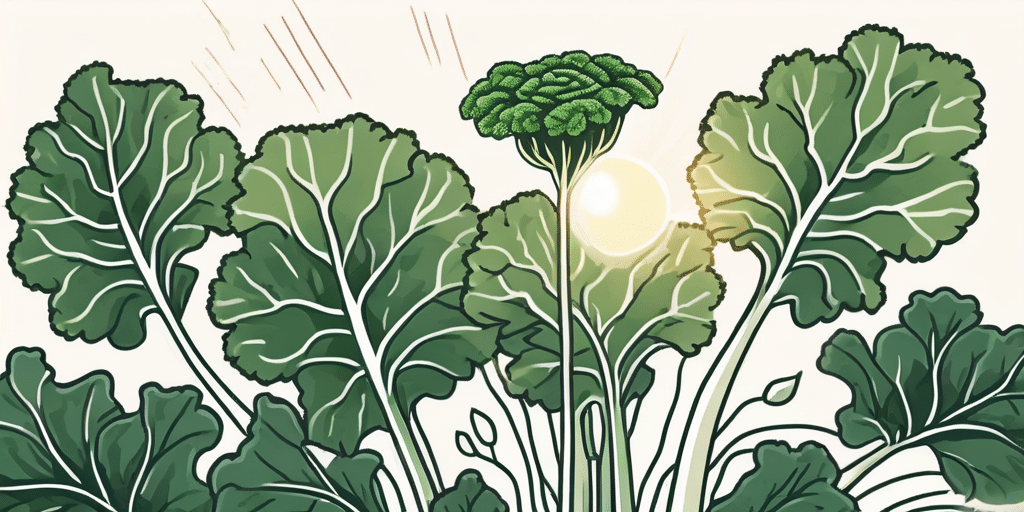Siberian kale is a fantastic addition to any Ohio garden. Not only is it a nutritious leafy green, but it’s also quite easy to grow. In this article, we will explore the ins and outs of growing Siberian kale in Ohio, from when to plant to how to care for this leafy green powerhouse. So, let’s dive right in!
Climate & Hardiness Zones in Ohio
Before we delve into the specifics of growing Siberian kale, it’s essential to understand the climate and hardiness zones in Ohio. Being aware of your growing conditions will help you plan and care for your crops better.
Ohio falls primarily within USDA hardiness zones 5 and 6. These zones are characterized by their colder winters and moderate summer temperatures. The northern areas of Ohio tend to fall in zone 5, while the southern parts are in zone 6. It’s worth noting that these zones serve as a general guide, and microclimates within the state can vary.
Within these hardiness zones, Ohio experiences a diverse range of weather patterns. The state encounters four distinct seasons, with hot summers and cold winters being the norm. Ohio’s climate is influenced by its proximity to the Great Lakes, which can lead to lake-effect snow in the winter and cooler summer temperatures near the lakeshores.
Furthermore, Ohio’s topography plays a role in its climate variations. The state is characterized by flat plains in the west and rolling hills in the east. These geographical features can impact temperature fluctuations and precipitation levels across different regions of Ohio. It’s important for gardeners to consider these factors when selecting plants for their gardens, as certain crops may thrive better in specific microclimates within the state.
When to Plant Siberian Kale in Ohio
Now that we know the hardiness zones, let’s talk about the optimal time to plant Siberian kale in Ohio. Generally, it’s best to start sowing the seeds or transplanting seedlings in early spring or late summer.
In early spring, you can start planting Siberian kale seeds indoors about four to six weeks before the last expected frost. Once the seedlings have developed their second set of true leaves, you can transplant them outside, ensuring they are at least 6 inches apart.
In late summer, you can sow seeds directly into the ground around 8 to 10 weeks before the first expected fall frost. To extend the growing season, you can use row covers or cold frames to protect your plants from frost. This way, you’ll be able to enjoy fresh Siberian kale well into the colder months.
It’s worth noting that Siberian kale is a cold-hardy vegetable that can withstand light frosts, making it an excellent choice for Ohio’s variable climate. This resilient plant can continue to thrive even as temperatures drop, providing you with a fresh and nutritious harvest throughout the changing seasons.
When planting Siberian kale in Ohio, consider enriching your soil with compost or well-aged manure to ensure optimal growth. This nutrient-rich soil will support the development of healthy kale plants, giving them the essential elements they need to flourish.
When to Harvest or Pick Siberian Kale in Ohio
Now that you’ve successfully planted your Siberian kale in the fertile soil of Ohio, it’s time to delve deeper into the art of harvesting or picking your leafy greens. Siberian kale, a robust and resilient variety, thrives in the Ohio climate and is particularly known for its cold tolerance. This exceptional trait allows Siberian kale to not only withstand frost but also to enhance its flavor profile as the temperatures drop, making it a sought-after choice for home gardeners and chefs alike.
For those aiming to savor the best flavor from your Siberian kale, it is highly recommended to time your harvest after a frost has graced your Ohio garden. The colder temperatures work their magic by breaking down some of the starches present in the leaves, resulting in a delightful sweetness that elevates the culinary experience. As a general guideline, aim to start harvesting your Siberian kale leaves when they have reached a respectable length of around 8 to 10 inches, ensuring a perfect balance of tenderness and flavor.
When it comes to picking the leaves, precision and care are key. To maintain the health and vitality of your Siberian kale plants, make sure to pluck only a few leaves from each plant during each harvest session. By adopting this mindful approach, you allow the smaller inner leaves to flourish and continue their growth trajectory, ultimately promoting a continuous cycle of leaf production. This thoughtful harvesting technique guarantees a steady and abundant supply of fresh Siberian kale throughout the season, allowing you to enjoy the fruits of your labor in various culinary creations.
Frequently Asked Questions
Q: Can Siberian kale tolerate Ohio’s hot summers?
A: Yes, Siberian kale can handle the summer heat in Ohio. While it performs best in cooler temperatures, it is still quite resilient and can tolerate hot weather. However, providing shade during extreme heat can help prevent the leaves from becoming bitter.
Q: How often should I water my Siberian kale plants?
A: Siberian kale prefers consistently moist soil, but it’s crucial not to overwater it. Aim to water your plants whenever the top inch of soil feels dry. During dry spells, you may need to water more frequently. Remember to water at the base of the plants to keep the leaves dry and prevent disease.
Q: Is Siberian kale susceptible to any pests or diseases in Ohio?
A: While Siberian kale is generally pest and disease resistant, it may still encounter some common issues. Keep an eye out for aphids, flea beetles, and cabbage worms, which are known to target kale plants. Regularly inspect your plants and intervene with organic pest control methods if necessary.
Q: Can I extend the growing season for Siberian kale in Ohio?
A: Absolutely! To extend your Siberian kale’s growing season, you can use row covers, cold frames, or even a low tunnel. These protections help shield your plants from frost and provide a stable microclimate. Remember to ventilate your covers during warmer days to prevent overheating.
Now armed with the knowledge of when to plant and how to grow Siberian kale in Ohio, you can confidently embark on your kale-growing journey. Enjoy the bountiful harvests and the delicious flavors this leafy green brings to your table!
But wait, there’s more! Let’s delve deeper into the fascinating world of Siberian kale. Did you know that Siberian kale, also known as Russian kale, is believed to have originated in Siberia, Russia? Its hardiness and ability to withstand cold temperatures make it a popular choice for gardeners in colder climates, including Ohio.
Not only is Siberian kale a nutritious addition to your diet, but it also adds a beautiful touch to your garden. Its blue-green leaves are not only visually appealing but also packed with vitamins A, C, and K, as well as minerals like calcium and iron. Incorporating Siberian kale into your meals is a great way to boost your immune system and support overall health.
Join the How to Grow Everything Community
Ready to take your gardening skills to the next level? Subscribe for free to How to Grow Everything and learn how to build the garden of your dreams! Receive personalized gardening advice tailored to your Ohio grow zone, experience level, and interests. Our family is committed to helping you grow not just Siberian kale, but everything your heart desires, with no spam, just the best gardening tips and exclusive deals delivered straight to your inbox. Join our community of passionate gardeners and start transforming your green space today!






